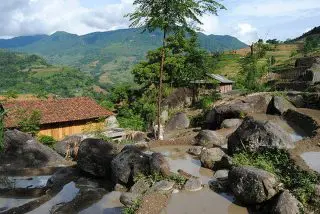
Xin Man, Ha Giang: What Makes This Region Special?
Xin Man district has a complex terrain, located in the upper Chay River mountain range, so it is mainly hills with steep slopes and divided by many streams.
The traditional linen weaving craft of Lung Tam Linen Weaving Village exists in a location near Hanoi. The village tour provides visitors with a special chance to discover the deep cultural traditions of Vietnam. The entire linen production process including flax seed planting and fabric weaving can be observed by visitors. The village contains expert artisans who produce beautiful textiles through their traditional weaving methods. The tour lets visitors meet local residents while they learn about traditional customs and purchase genuine handmade items. The Lung Tam Linen Weaving Village stands as an essential destination for anyone who wants to experience Vietnamese heritage because of its deep cultural value. The tour starts from Hanoi so visitors can easily book it for a day trip.

Visitors can discover traditional Vietnamese linen weaving villages to experience the deep cultural heritage of the country. Day trips from Hanoi’s capital city allow visitors to observe linen weaving artisans while they learn about the traditional craft’s historical value. Visitors can experience Vietnamese cultural uniqueness through both observing expert weavers and attempting to weave themselves.
People who like Vietnamese linen weaving techniques and patterns should visit villages that specialize in traditional textile art. These places offer classes on natural dyeing methods, indigo dyeing techniques, and Vietnamese embroidery patterns. To learn more about Vietnamese linen weaving tours and handmade textile products, visit vietgotravels.com for information on cultural heritage tours, traditional weaving workshops, and Vietnamese fabric design, including popular techniques like bamboo weaving and silk weaving patterns.
Traditional Vietnamese clothing made from linen and other natural fibers like silk and cotton is very popular. People like to wear Ao Dai dresses made from linen because they are cool and comfortable. These clothes are also good for the environment because they are made from natural fibers like flax and hemp, which are used for sustainable fashion and eco-friendly textile production, including organic linen fabric and handmade clothing with traditional Vietnamese embroidery designs.
Visitors can explore traditional Vietnamese linen production through day trips from Hanoi to rural villages. The villages specialize in handwoven linen products which include embroidered tablecloths and woven wall hangings and homemade linen clothing. The villages provide Vietnamese rural tourism activities which include flaxseed farming and natural dyeing and handmade textile workshops that teach sustainable fashion and eco-friendly linen production methods.
Supporting sustainable Vietnamese linen weaving communities is a great way to help the environment and local people. By visiting these communities and buying their products, tourists can help them earn money and keep their traditional crafts alive. To learn more about eco tourism and sustainable linen weaving in Vietnam, visit vietgotravels.com and find out how you can be a part of responsible travel and cultural heritage preservation, while promoting fair trade and community-based tourism, and experiencing authentic Vietnamese village tours and handmade textile shopping.

lung-tam-village-ha-giang
A guided Northern Vietnam textile tour provides an ideal opportunity to explore local linen production and heritage. The area stands out for its deep cultural history and its traditional weaving and embroidery practices. A guided tour provides visitors with the opportunity to learn about textile production methods and their importance to the local community.
Exploring traditional Vietnamese weaving techniques with natural dyeing methods is a great way to learn about sustainable fashion and eco-friendly textile production. This method uses plants and herbs to create colors for clothing and fabrics, which is better for the environment than using chemicals. To learn more about natural dyeing and sustainable fashion, visit vietgotravels.com and discover the art of traditional Vietnamese weaving, organic cotton production, and environmentally friendly fashion design, including handmade silk weaving, natural fiber clothing, and sustainable apparel manufacturing.
People can learn about handmade silk production in rural northern Vietnam villages. People can observe the process of silk thread production from silkworms and the weaving of these threads into traditional Vietnamese clothing. People can learn about Vietnamese sericulture and silk weaving techniques and natural dyeing methods used in northern Vietnam’s rural villages through this method, including traditional Vietnamese silk fabric making and Vietnamese handmade silk textile production.
The traditional textiles of Southeast Asia’s indigenous hill tribes maintain both historical value and cultural importance. The members of these tribes create their traditional clothing and fabric through natural dyeing methods and traditional weaving techniques. The artists use “ethnographic tapestry”, “cultural heritage preservation” and “sustainable textile production” to describe their work which supports “hill tribe community development” and “traditional craft empowerment”. The textiles maintain links to “folk art conservation” and “indigenous cultural exchange programs” as well.
Community-based tourism initiatives are helping to revive traditional linen weaving in northern Vietnam, supporting local artisans and preserving cultural heritage. Through village tours and workshops, visitors can learn about the history and techniques of natural fiber production, including flax cultivation, spinning, and weaving. For a unique experience, visit vietgotravels.com to book a northern Vietnam textile tour, focusing on sustainable tourism, cultural exchange, and traditional crafts like handmade linen clothing and home textiles, which are popular among eco-friendly travel enthusiasts and fans of Vietnamese folk art.
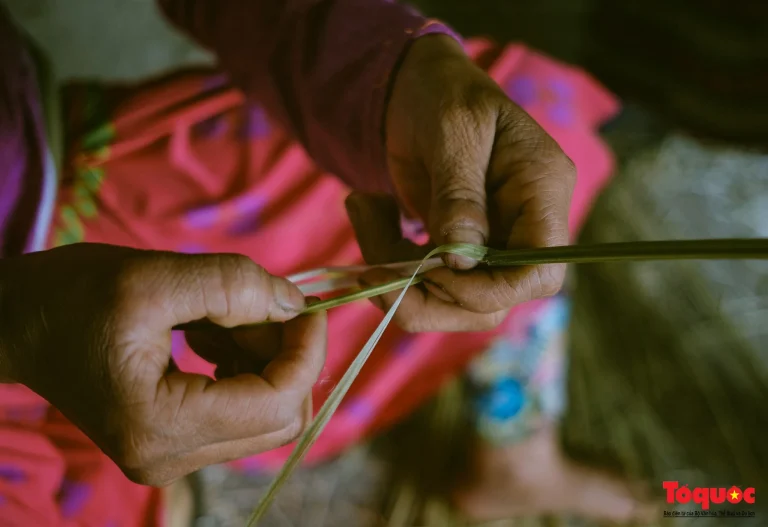
Several excellent day excursions exist from Hanoi to explore traditional Vietnamese linen weaving villages. The Lung Tam Linen Weaving Village stands as a well-known destination which lies close to Hanoi. The village stands out because it demonstrates the complete process of linen production from seeds to finished clothing. The entire production process is available for visitors to observe while they can purchase handmade items. The village provides simple access from Hanoi so it makes an excellent day trip destination. People can enhance their village experience by booking a guided tour which will both entertain them and provide additional knowledge about the village.
The process of booking a guided Northern Vietnam textile tour remains straightforward. Tour companies operating in Hanoi and online platforms enable people to discover textile tour options. The tours provide English-speaking guides who explain all aspects of villages and linen production to visitors. The guide will lead visitors through multiple villages to demonstrate textile production techniques including linen and other textile manufacturing processes. Visitors who join certain tours can participate in textile-making activities such as weaving and dyeing. Tourists should pre-book their tours because availability depends on prior reservations.
A guided Northern Vietnam textile tour provides both entertainment and educational value to visitors. The process of textile production becomes visible to visitors who witness the entire journey from seed planting to clothing weaving. The tours allow visitors to visit villages where they can interact with the creators of these stunning products. The tours provide various activities which include traditional food tasting and dance performances and opportunities for visitors to learn weaving and dyeing techniques. The guides possess extensive knowledge which enables them to respond to all visitor inquiries. The limited size of tours allows visitors to receive extensive guidance from their guide while experiencing a personalized tour.
A standard Hanoi day trip to a traditional Vietnamese linen weaving village requires 8-10 hours of time. The total duration includes transportation to and from the village as well as the time spent exploring the village and learning about linen production. The duration of the trip depends on the distance between Hanoi and the village together with the number of activities included in the tour. The duration of the trip becomes longer when tours include lunch and additional activities. Tour participants should contact their tour company to determine the actual duration of their trip.
The Lung Tam Linen Weaving Village exists near Hanoi as a unique location where people produce linen fabrics. The village contains expert weavers who maintain traditional methods to produce attractive textiles. The process of fabric creation is visible to visitors who can observe the entire production sequence starting with seed planting and ending with weaving. Tourists can interact with local residents while discovering their traditions and purchasing items made by hand. This experience provides an excellent opportunity to discover both Vietnamese cultural heritage and historical background.
The village tour offers simple booking options from Hanoi which allows visitors to experience it as a day excursion. The tour appeals to people who have interests in history and culture and handmade products. This tour provides an excellent opportunity to gain new knowledge while enjoying yourself. Visiting Lung Tam Linen Weaving Village enables you to support local artisans while preserving their traditional practices.
The Lung Tam Linen Weaving Village offers tours to those who want to learn about Vietnamese heritage. You will have a great time and learn a lot about this special place and its people. Don’t miss this chance to discover the beauty of Vietnamese culture and history. Book your tour now and get ready for an unforgettable experience!

Xin Man district has a complex terrain, located in the upper Chay River mountain range, so it is mainly hills with steep slopes and divided by many streams.
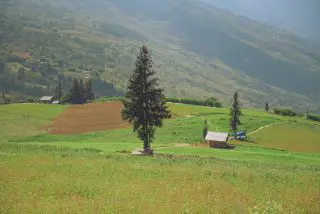
Venture into the untamed beauty of northern Vietnam with Vietnam Treasure and discover the magic of Suoi Thau Steppe. This captivating landscape offers a unique blend of cultural immersion and breathtaking natural scenery far from the bustling tourist trails.
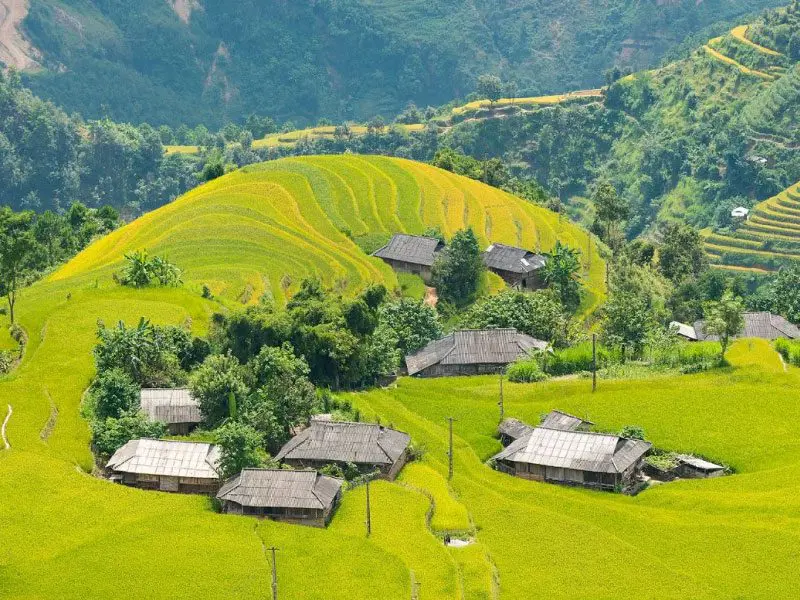
Nestled high in the mountainous region of Ha Giang, Phung Village (Ban Phung) is a hidden gem offering a glimpse into the authentic beauty and culture of Northern Vietnam.
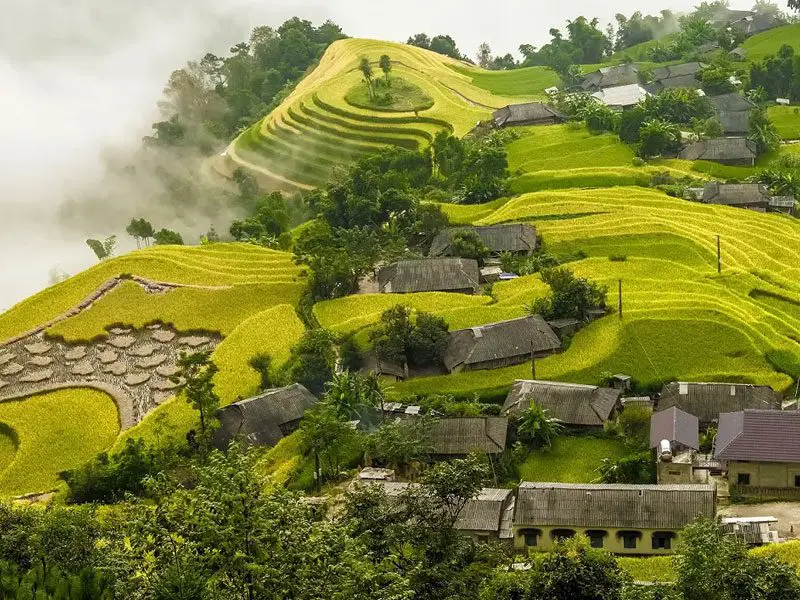
Stop at Thong Nguyen Village, and you will discover amazing beauty. This is a rugged and difficult mountainous area. Many people may think that nothing is interesting here. Join Vietnam Treasure to discover the beauty of Thong Nguyen Village.
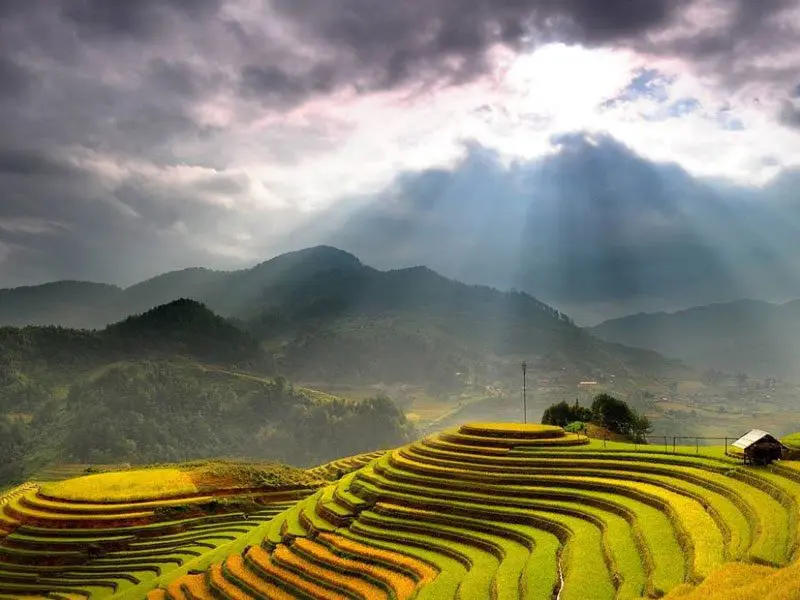
Its name, Hoàng Su Phì or Hoàng Thụ Bì, means “the yellow bark” in the Hmong language. It indicates the woods of weeping cypress, which is a local specialty.
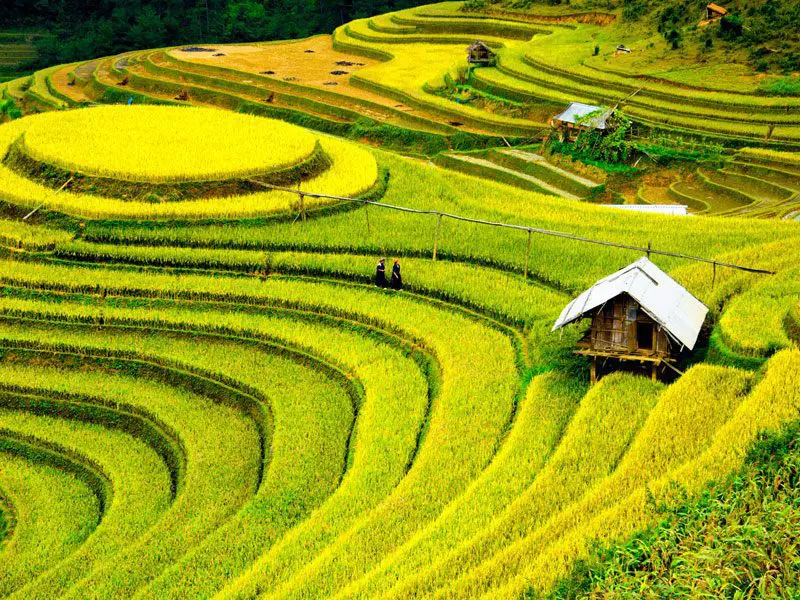
Hoang Su Phi terraced fields possess an undeniable charm, creating a mesmerizing scene—journey to Ha Giang with Vietnam Treasure to witness the brilliant golden rice harvest season. Although present in many countries, especially in Southeast Asia, terraced fields in Vietnam are deeply associated with the traditional agricultural activities of many ethnic groups in the northern mountainous region, such as the H’Mong, Dao, Nung, La Chi and Ha Nhi.
Tu San Canyon (Mèo Vạc district), the deepest canyon in Vietnam. It has a depth of about 800 m, a length of 1.7 km, and cliffs that slope 70° to 90°.
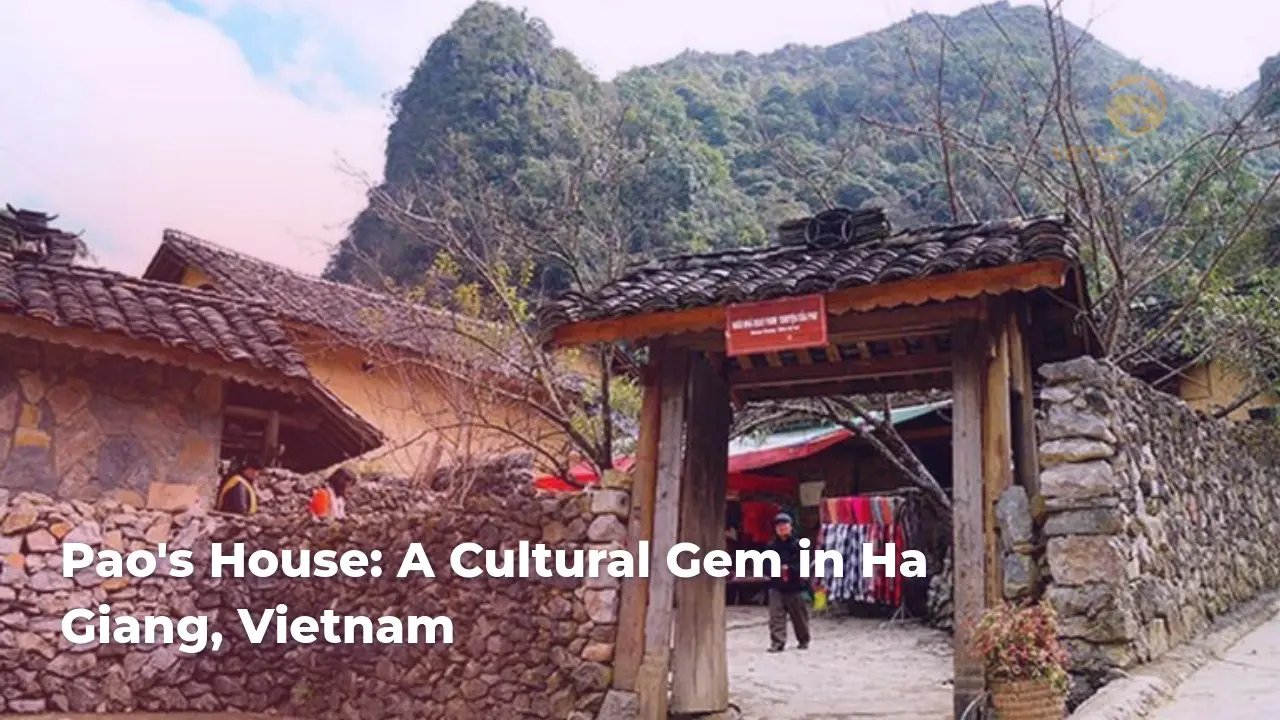
Discover the charm of Pao’s House, Ha Giang. Dive into local culture and scenic beauty. Plan your adventure now!
Copyrights @2025 Vietgo Travels. Terms and Conditions Privacy Policy
Hotline
+84 855 452 888 (Viet Nam) / +1 (206) 665 3090 (US)
Email: [email protected]
Website: www.vietgotravels.com
Head Office:
No. 23 Lo Su Street, Hoan Kiem District, Ha Noi, Viet Nam.
Viet Nam’s branch:
No. 35 Hang Quat Street, Hoan Kiem District,
Ha Noi, Viet Nam.
US:
831 41st Pl, Everett, WA 98201, USA